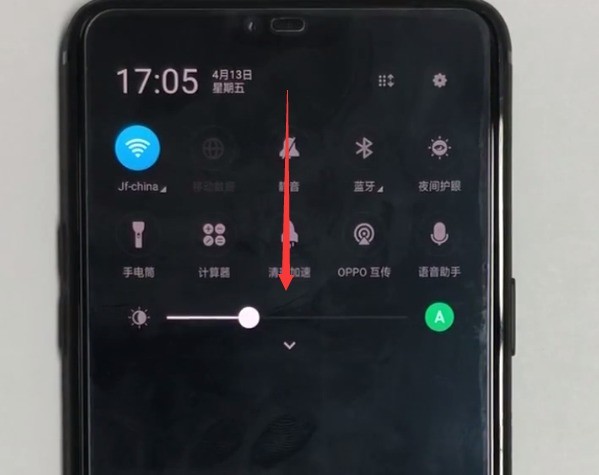Translator | Bugatti
Reviewer | Qianshan
Recently, the US "Business Insider" magazine reported that Amazon's voice assistant Alexa and smart speaker business will lose $10 billion. The news comes as Alexa's competitors are also facing their own difficulties and trying to find ways to make their voice assistants profitable.
The current state of Alexa and other voice assistants reminds us that there is a gap between developing great technology and making money based on it. Tech companies are busy laying off workers in preparation for the coming recession, and new but unprofitable technologies will have to find ways to demonstrate their value or be eliminated by businesses in order to survive.
Eight years after the launch of Amazon Alexa, we can learn the following things from the voice assistant technology and this business.
1. Technology is good, but not good enough
Many innovations have enabled voice assistants like Amazon Alexa to do more than a decade ago Mission impossible. Advances in automatic speech recognition help assistants pick up and analyze a user's voice under different background noise conditions, in the face of other interfering sounds and the user's different accents. A natural language processing system based on deep neural networks such as Transformer, RNN, and LSTM helps the assistant match slightly different voices with corresponding commands. Imagine all the different ways you can ask about the weather or request timing. There are now many application platforms and APIs that allow voice assistants to traverse large amounts of information on the web and map voice commands to application functionality.
However, today’s voice assistants have limited capabilities. Generally speaking, Amazon Alexa can only perform simple tasks, such as setting a timer, playing music, checking the weather, and searching for simple information on the Internet.
These tasks are either so narrow that there isn’t much room for error, or they are so insensitive that even if the assistant makes a mistake it won’t cause much harm.
Voice assistants become unreliable once you want to perform tasks that are sensitive, require multiple interactions, or are multimodal in nature. Take shopping as an example. This is one of the important uses Amazon originally planned for Alexa. This is a sensitive task because it involves money, and users want as few errors as possible. This is also a complex task as it often requires multiple steps and the user wants to see the product purchased and wants to be able to browse purchase suggestions and alternatives. This is difficult to achieve with a voice-only interface, as is other tasks such as scheduling meetings.
2. Why do people pay?
#You've built a cool voice assistant that can perform a range of tasks quite accurately that other assistants can't. How to make it profitable? Given current applications, there are several solutions.
The first solution is to sell hardware, such as different versions of Amazon Echo, Apple HomePod or Google Nest smart speakers. In this case, the commercial value will be tied to the price of the device, the number of devices sold, and how often customers replace the device. This approach works for smartphones, since people spend hundreds of dollars every few years to upgrade their iPhone or Pixel phones, but it doesn't work for smart speakers. First, people are unwilling to pay a high premium for it because they don't use the device often. Secondly, there isn’t much to upgrade about a smart speaker; it’s basically just a microphone and a speaker, and sometimes a screen. Therefore, customers have no reason to replace them regularly. Finally, there are fees for upgrading and maintaining cloud services that support voice assistants. Therefore, roughly speaking, continued use of smart speakers will increase the costs for smart speaker manufacturers, and eventually these costs will exceed the profits from selling the speakers.
The second solution is to sell services. In this case, users pay a monthly or annual fee to use a voice assistant on their phone or smart speaker. In this case, your product must have enough value that users are willing to pay for it. For this business model to be successful, your product must solve an unsolved problem or create enough added value to convince users to pay for it, thereby achieving product/market fit. Unfortunately, the tasks performed by Amazon Alexa and other voice assistants are not valuable enough for users to pay for them.
Finally, you can think of Amazon Alexa as a channel to attract users to other money-making products. For example, Amazon believes Alexa will allow users to shop online more frequently. However, due to the limitations mentioned above, Alexa does not provide a good shopping experience, and users still prefer to use mobile phones or web applications to shop.
Basically this goes back to what was said at the beginning. From a scientific and engineering perspective, Amazon Alexa is truly brilliant. But from a product and business perspective, it does not have the elements to make money.
3. The next generation voice assistant?
The first generation of voice assistants had a great idea (using voice as an interface to interact with computers) but failed to create a profitable business model. We've seen this with VR headsets from the 1990s (which were too expensive and too low-quality) and AR glasses from the early 2010s (which didn't offer enough added value to justify their price point). Alexa and Siri are still selling well because they were developed by companies with deep pockets who, under normal market conditions, can afford to lose money on new products until they find a business model (or kill new products).
What’s next for voice assistants? I saw several ways out.
One solution is to wait until AI technology gets so good that it can support completely different applications (such as a voice assistant that is always one step ahead and proactively contacting you instead of being You activate it?)
Another solution is to move away from the current model of general-purpose voice assistants to more vertically specialized assistants that can adapt to different applications. This will enable voice assistants to be integrated into the context and workflow of various applications, making them fully capable of handling complex multi-step tasks. I think there may be viable B2B business models in this form, especially in industries that involve a lot of manual operations (manufacturing, restaurants and hotels, etc.), after all, voice assistants can improve efficiency and reduce costs. The added value to businesses will far outweigh the convenience consumers get from talking on their phones (just like the second generation of Google Glass found product/market fit in the handmade goods industry).
I’m not sure screenless smart speakers will ultimately be the right style for the voice assistant of the future. Many of our daily tasks involve visual elements, and pure voice assistants will be of limited use. It remains to be seen what the outcome will be in this regard.
Amazon has no plans to kill Alexa yet, but I think it might be time to move on to the next generation of voice assistants.
Original link: https://bdtechtalks.com/2022/11/28/amazon-alexa-revenue/
The above is the detailed content of Is the voice assistant good? Good, but not good enough. For more information, please follow other related articles on the PHP Chinese website!
 oppo手机中开启语音助手的详细方法Mar 29, 2024 pm 05:46 PM
oppo手机中开启语音助手的详细方法Mar 29, 2024 pm 05:46 PM1、从手机屏幕顶端下拉。2、点击状态栏右上角的排列图标,如下图所示,可以看到所有的快捷功能键。3、找到并点击【语音助手】即可打开语音助手。进入如下页面后,我们就可以开始使用语音助手了。
 vivo手机中打开语音助手的方法介绍Mar 23, 2024 pm 05:10 PM
vivo手机中打开语音助手的方法介绍Mar 23, 2024 pm 05:10 PM1、首先我们先打开语音助手的功能,在桌面打开【设置】-【更多设置】。2、点击进入【vivoice】,打开【动作启动】和【锁屏声控】,然后我们就可以启动语音助手了。3、长按手机多功能键即可呼出语音助手,我们也可以按上图所示的【动作启动】或者【锁屏声控】开启语音助手。
 小布是什么手机的语音助手Dec 06, 2022 pm 02:04 PM
小布是什么手机的语音助手Dec 06, 2022 pm 02:04 PM小布是OPPO手机的语音助手;小布助手简称小布,也叫Breeno,是OPPO智能手机和IoT设备上内置的AI助手,包含语音、建议、指令、识屏和扫一扫5大能力模块。
 小米手机语音助手怎么唤醒Mar 02, 2024 pm 05:31 PM
小米手机语音助手怎么唤醒Mar 02, 2024 pm 05:31 PM小米手机语音助手怎么唤醒?在小米手机中是有智能语音助手,但是多数的用户不知道如何唤醒语音助手,接下来就是小编为用户带来的小米手机语音助手唤醒方法图文教程,感兴趣的用户快来一起看看吧!小米手机语音助手怎么唤醒1、首先打开小米手机中的【设置】功能,页面点击【小爱同学】;2、之后跳转到小爱同学功能页,选择【智慧语音】功能;3、最后滑动下图所示的【语音唤醒】后方的按钮即可唤醒语音助手。
 2023年中国蓝牙音箱市场回暖,线上销量占比近九成Feb 20, 2024 pm 12:27 PM
2023年中国蓝牙音箱市场回暖,线上销量占比近九成Feb 20, 2024 pm 12:27 PM2月20日消息,洛图科技(RUNTO)最新报告揭示,2023年中国蓝牙音箱市场呈现回暖态势。尽管过去几年面临技术成熟、迭代升级缓慢以及智能音箱冲击等多重挑战,市场销量连续下滑,但今年销量达到2370万台,同比增长1.9%。这一增长主要得益于线上市场的强劲表现,线上销量占比高达89%。报告强调,中国蓝牙音箱市场长期以来被国际品牌主导,本土品牌一直处于劣势地位。但在2023年,一些本土品牌通过持续创新和差异化策略开始崭露头角,逐渐改变这一局面。据小编了解,Harman(哈曼卡顿)作为国际知名品牌,以
 win11怎么开启语音助手?win11开启语音助手设置教程Mar 28, 2024 pm 02:38 PM
win11怎么开启语音助手?win11开启语音助手设置教程Mar 28, 2024 pm 02:38 PMwin11系统中有一个名为小娜的语音助手,可以帮助我们快速的开启程序或者是找到对应的文件,许多小伙伴这个功能都是关闭的,现在想要使用却不知道应该如何开启,针对这个问题,今日的win11教程就来为广大进行解答,感兴趣的朋友随时欢迎来本站获取完整步骤吧。win11开启语音助手设置教程1、首先我们点击任务栏中的开始菜单。3、开启之后,我们只需要在麦克风中说话就可以使用了。5、然后在左侧栏中找到辅助功能。7、最后再其中开启Windows语音识别就可以了。
 oppo的语音助手叫什么唤醒「附:智能语音助手命名与唤醒词收集」Feb 07, 2024 am 09:27 AM
oppo的语音助手叫什么唤醒「附:智能语音助手命名与唤醒词收集」Feb 07, 2024 am 09:27 AM唤醒词keywordspotting(KWS):在连续语流中实时检测出说话人特定片段。这里要注意,检测的“实时性”是一个关键点,语音唤醒的目的就是将设备从休眠状态激活至运行状态。▍手机小米:“小爱同学”。华为:HiAssistant,“小艺小艺”。OPPO的手机语音助手名为“小布助手”或“Breeno”,唤醒词可以是“你好小布”、“小布小布”或“HeyBreeno”。另外,早些时候还可以找到“小欧语音助手”,其唤醒词为“小欧小欧”或可以自定义。(一加与OPPO相同)vivo:Jovi,“小V小V
 如何启用Win11语音助手Dec 23, 2023 pm 06:15 PM
如何启用Win11语音助手Dec 23, 2023 pm 06:15 PM自从win10系统内置cortana小娜开始,就有很多用户非常喜欢这个AI人工智能,它可以帮助我们快速找到想要的内容,还可以通过语音输入,但是在win11系统中,用户不知道可不可以语音唤醒了,下面就跟着小编一起来看看吧。win11语音助手怎么开:1、首先我们点击任务栏中的开始菜单。2、然后点击上方搜索框,在其中搜索就可以打开“cortana”语音助手了。3、开启之后,我们只需要在麦克风中说话就可以使用了。4、如果我们无法使用,可能是因为没有开启语音功能,首先进入设置。5、然后在左侧栏中找到“辅助


Hot AI Tools

Undresser.AI Undress
AI-powered app for creating realistic nude photos

AI Clothes Remover
Online AI tool for removing clothes from photos.

Undress AI Tool
Undress images for free

Clothoff.io
AI clothes remover

AI Hentai Generator
Generate AI Hentai for free.

Hot Article

Hot Tools

mPDF
mPDF is a PHP library that can generate PDF files from UTF-8 encoded HTML. The original author, Ian Back, wrote mPDF to output PDF files "on the fly" from his website and handle different languages. It is slower than original scripts like HTML2FPDF and produces larger files when using Unicode fonts, but supports CSS styles etc. and has a lot of enhancements. Supports almost all languages, including RTL (Arabic and Hebrew) and CJK (Chinese, Japanese and Korean). Supports nested block-level elements (such as P, DIV),

ZendStudio 13.5.1 Mac
Powerful PHP integrated development environment

Zend Studio 13.0.1
Powerful PHP integrated development environment

SublimeText3 Chinese version
Chinese version, very easy to use

Safe Exam Browser
Safe Exam Browser is a secure browser environment for taking online exams securely. This software turns any computer into a secure workstation. It controls access to any utility and prevents students from using unauthorized resources.







